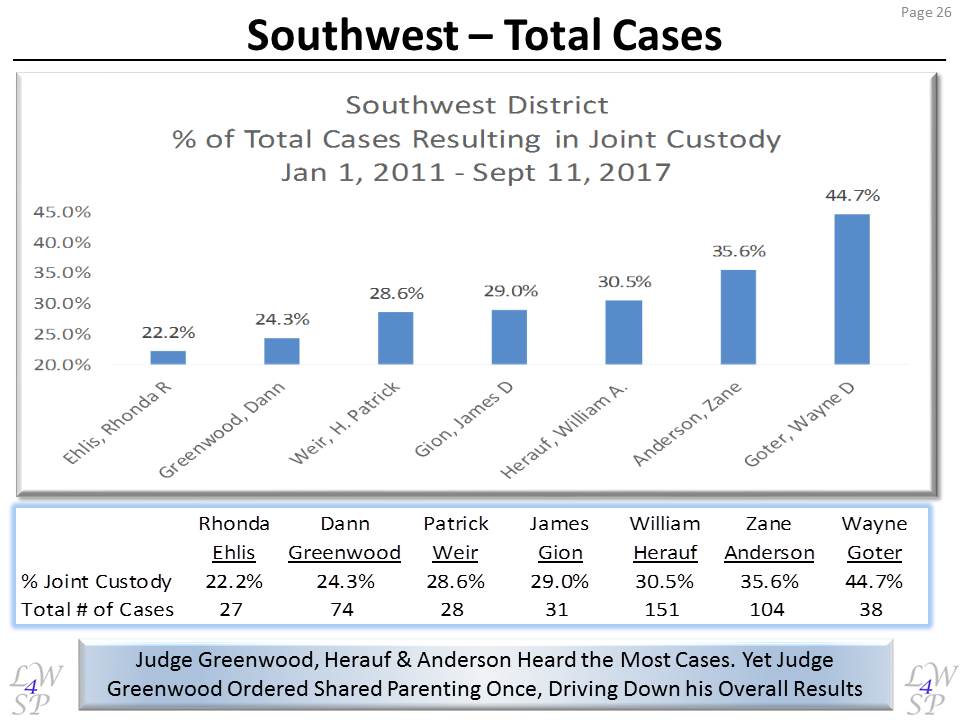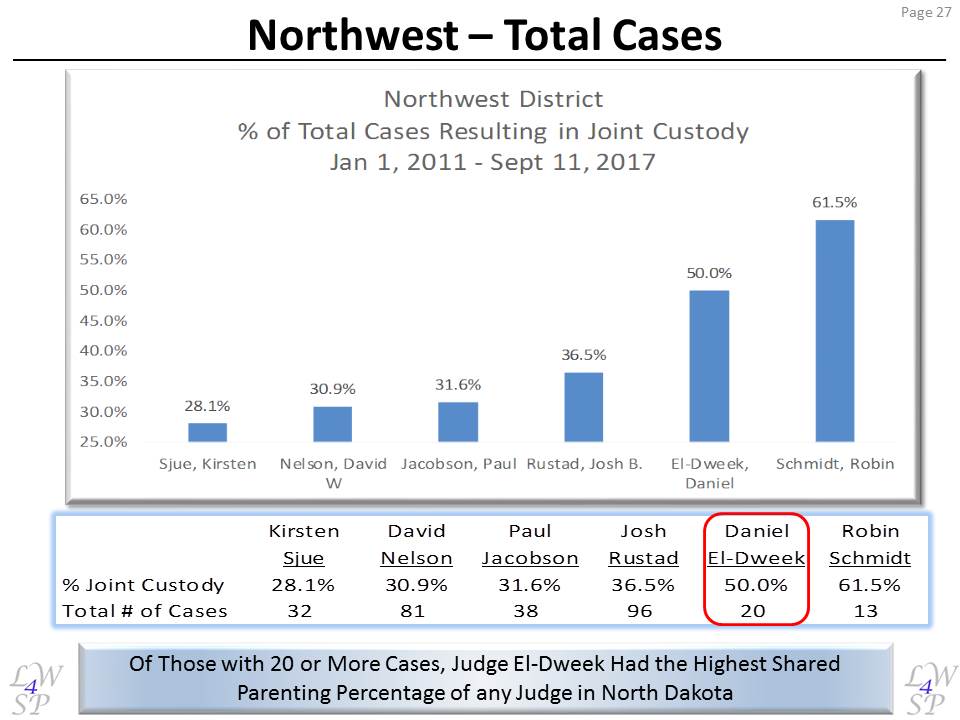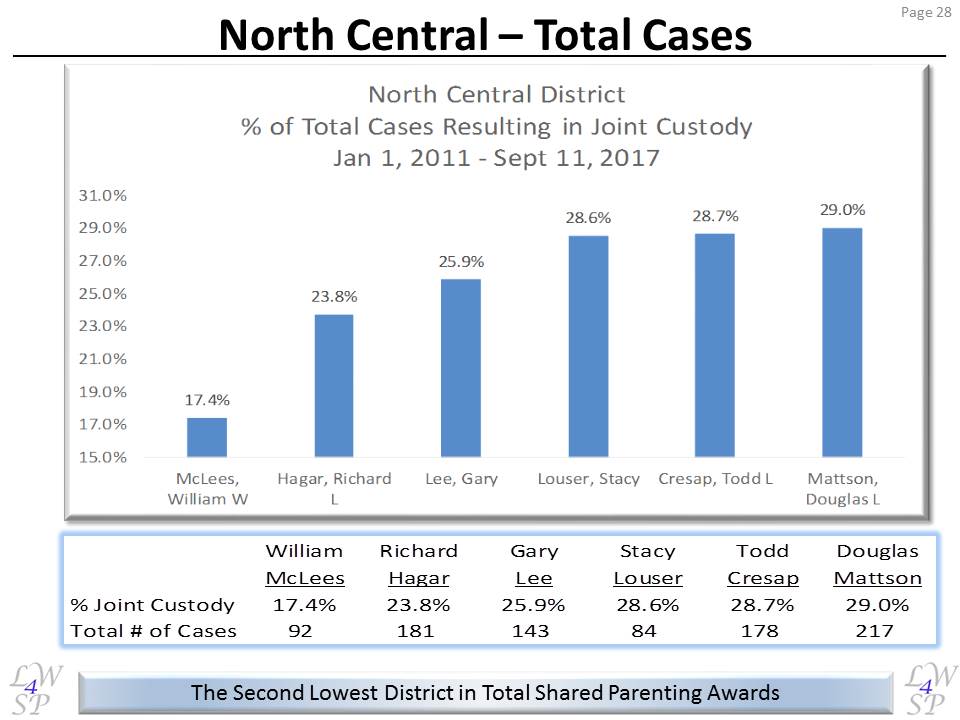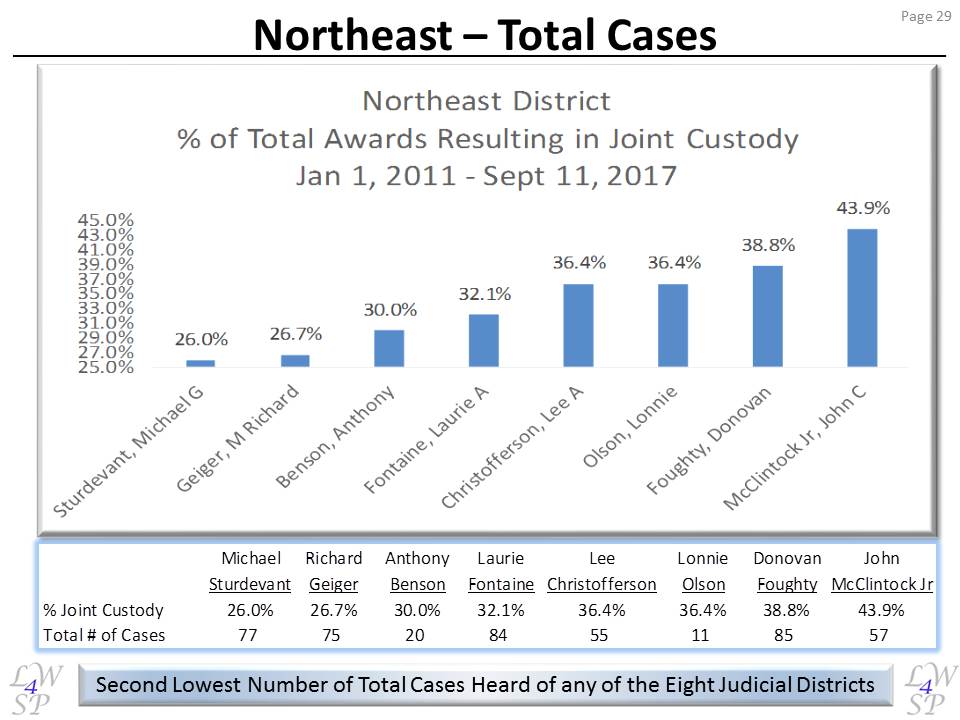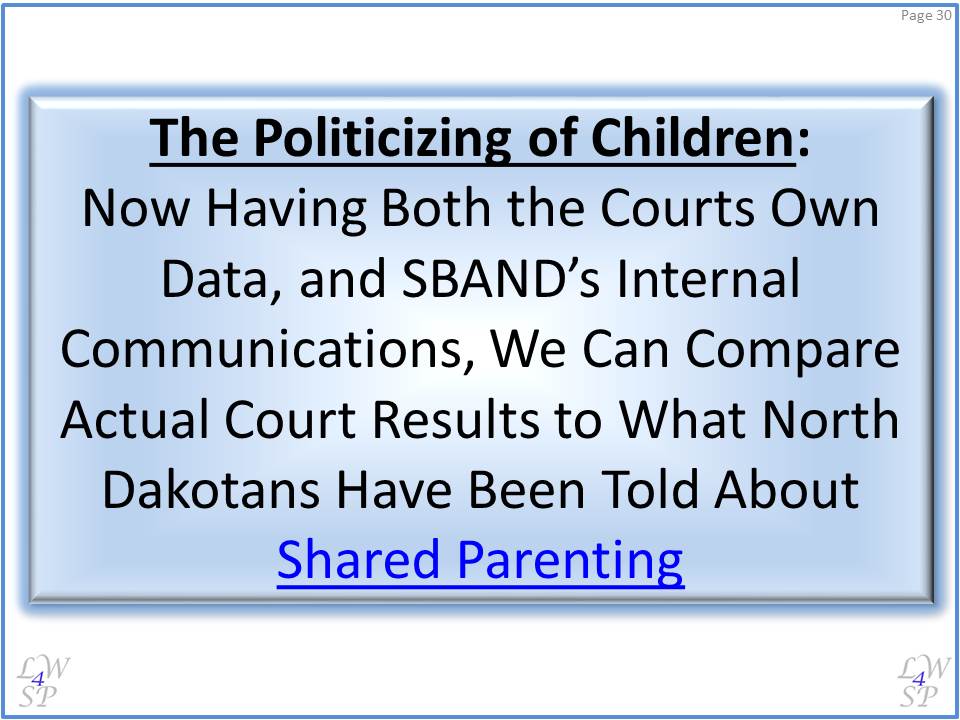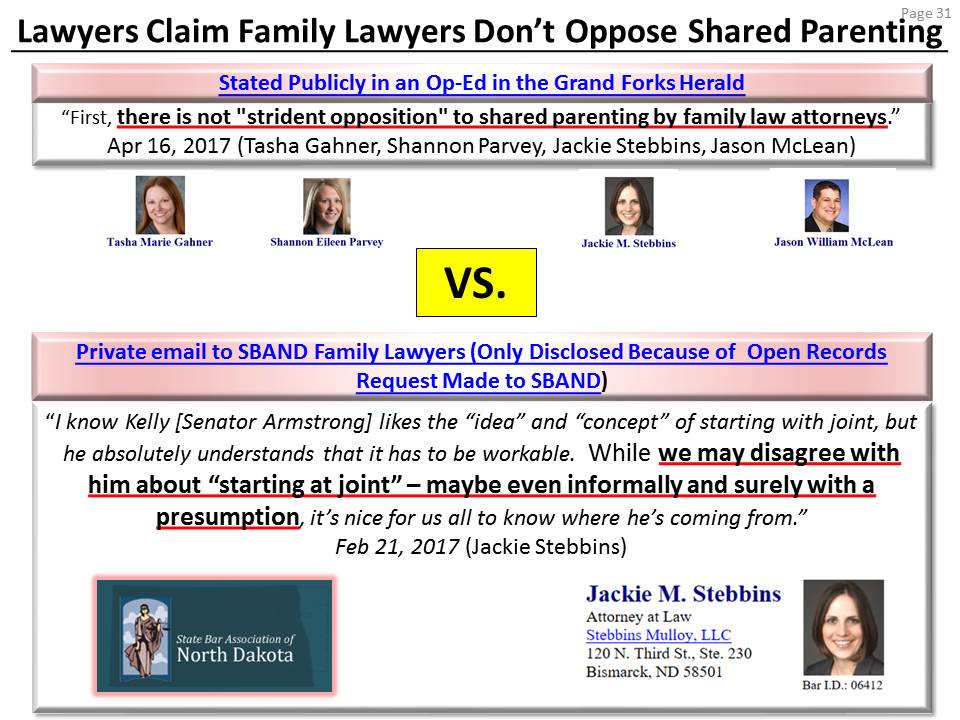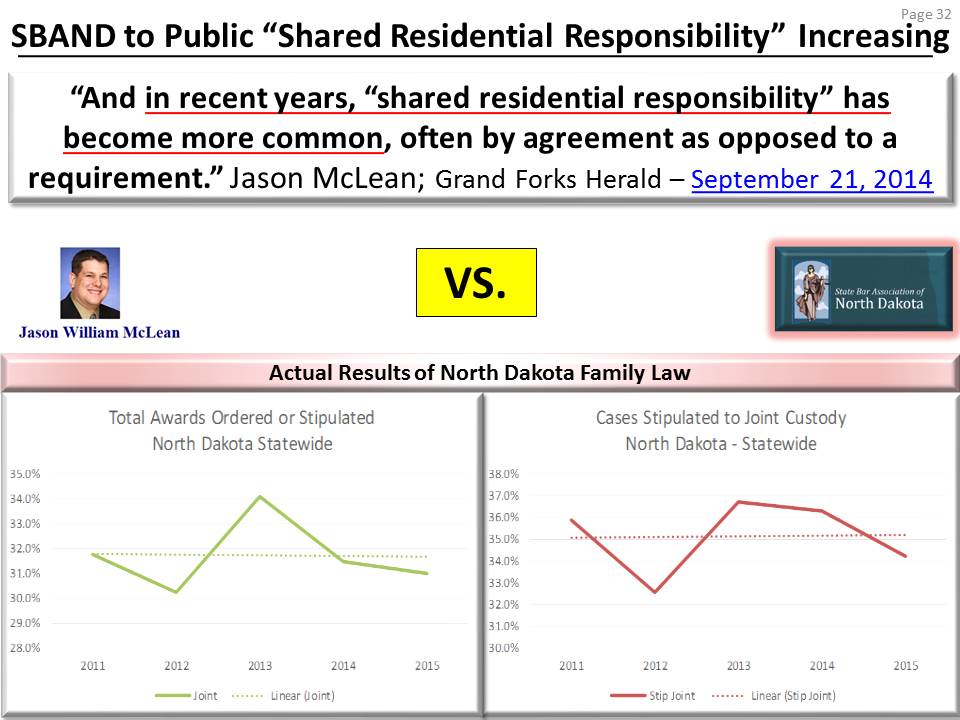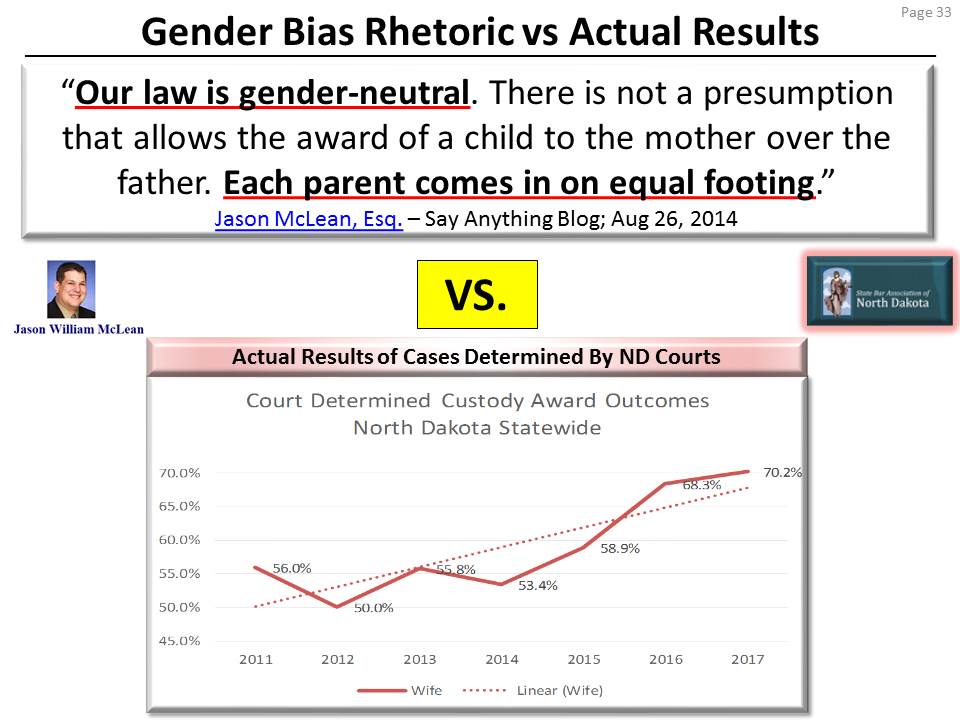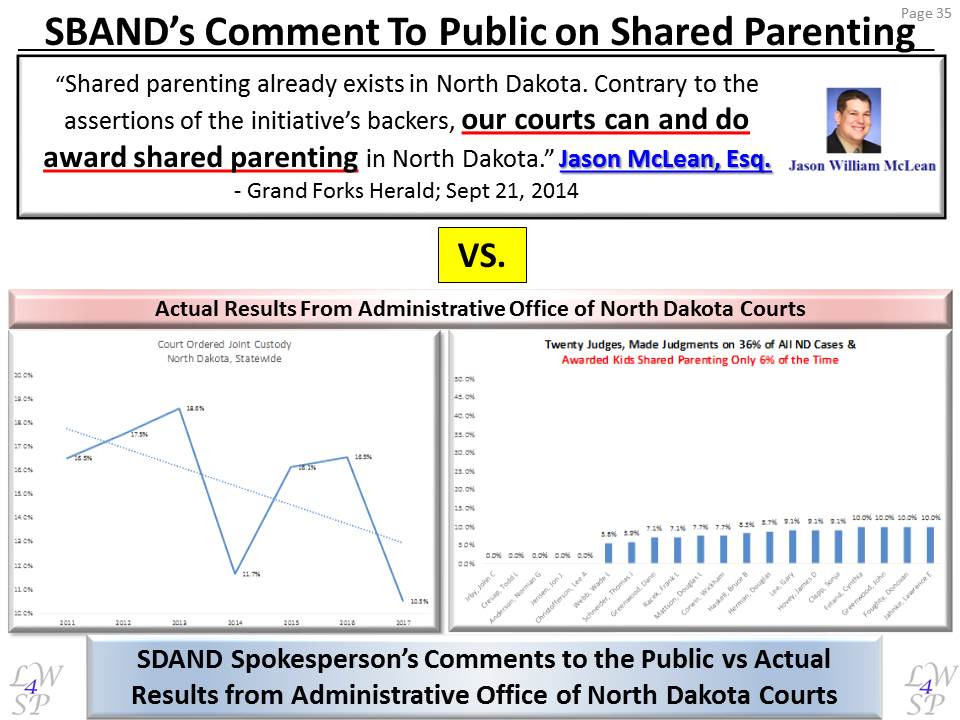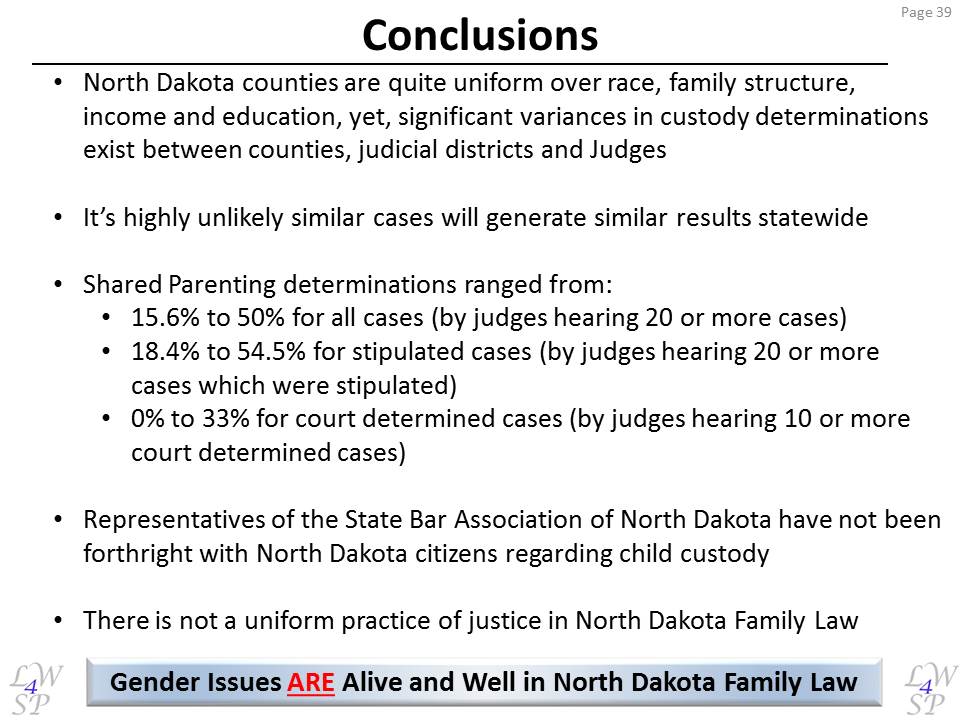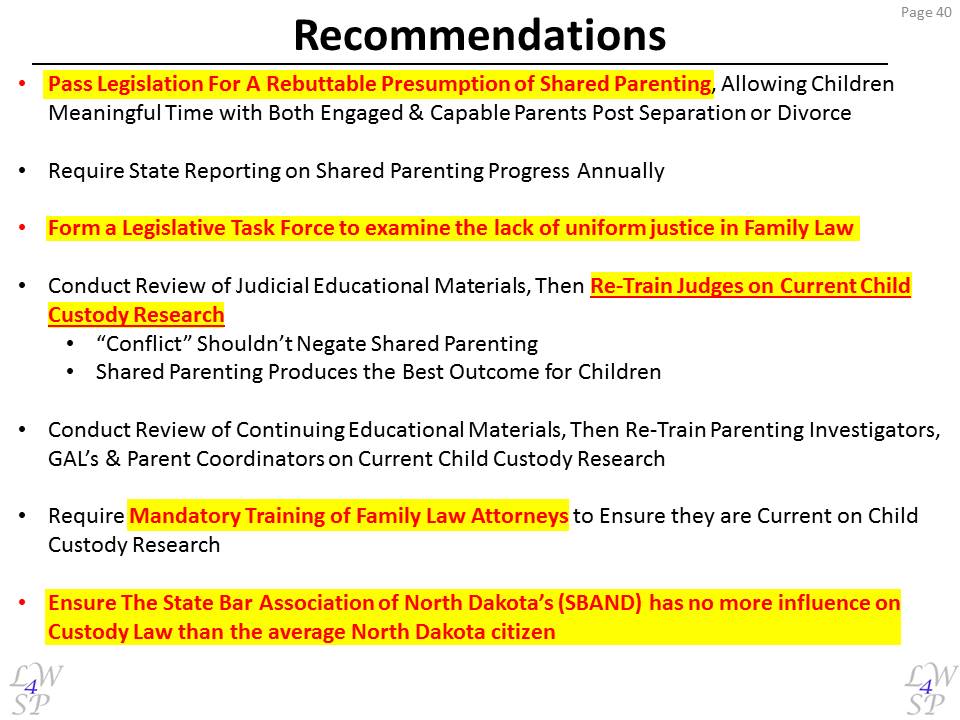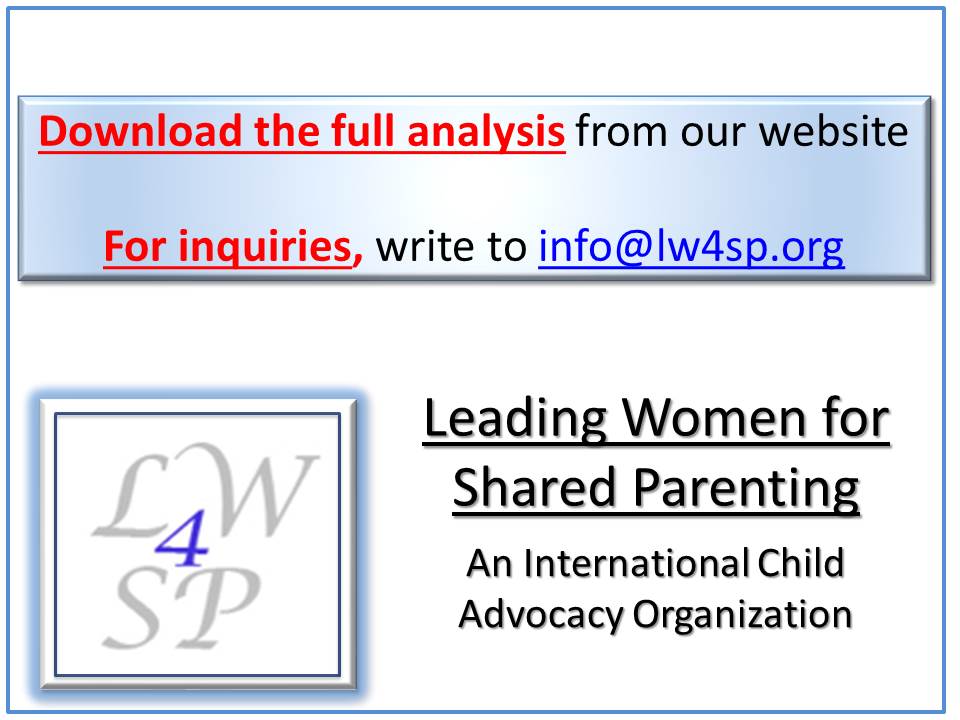North Dakota Child Custody Determinations by Judge
In what we believe is the first time such extensive results have been published, Leading Women for Shared Parenting has analyzed the child custody determinations, from January 1, 2011 through September 11, 2017 for the entire state of North Dakota. What makes this analysis special is its direct association with the names of each judge ruling on child custody determinations in each case.
With great cooperation from the Administrative Office of North Dakota Courts, LW4SP received an exported version of the data maintained by the Courts themselves. We’ve posted the raw data, just as it was sent to us, to enable others to complete their own analysis.
From the data, we were able to extrapolate each custody determination into the eight Judicial Districts used in North Dakota. In our previous analysis, we compared custody determinations between Judicial Districts (District vs. District) and Counties (County vs. County) finding significant variances existed in child custody determinations. These results were concerning, given the homogeneous nature of the population. North Dakota, often cited as one of the least diverse states in the US, has a very similar population concerning family structure, race, income, and education, making the significant custody variances, troubling.
This new analysis, completed on a Judge vs. Judge basis, is even more concerning and, we believe, should prompt Legislative action.
Summary of Findings:
Again, our analysis exposed significant variances, even between Judges presiding over cases in the same County. Shared Parenting determinations ranged from:
- 15.6% to 50% for all cases (by judges hearing 20 or more cases)
- 18.4% to 54.5% for stipulated cases (by judges hearing 20 or more cases which were stipulated)
- 0% to 33% for court determined cases (by judges hearing 10 or more court determined cases)
We do not believe cases with similar fact patterns will generate similar results in North Dakota family law, and the data supports our conclusion. Instead, the level of involvement the mother wants the father to have in the lives of their child, the district in which the divorce has been filed, and the individual proclivities of the Judge assigned to one’s case will weigh much more heavily in determining the outcome. We can say it no more plainly than this; there is not a uniform practice of Justice in North Dakota family law.
Now having the Courts data, the internal communications from the State Bar Association of North Dakota (SBAND), and the editorials SBAND members published in the North Dakota media, we also included a comparison of the messages communicated to the citizens of North Dakota. The multiple comparisons, between the rhetoric and the actual court results, speak for themselves and are extraordinarily troubling.
Presentations:
As we’re confident that no analysis of child custody determinations by North Dakota Judge has been previously completed by;
- The North Dakota Courts,
- Child Support Office,
- State Bar Association of North Dakota (SBAND),
- Family Law Task Force,
- North Dakota Legislature,
- Governor Burgum’s Office, or
- The North Dakota media
LW4SP completed such ourselves, so Citizens could know the odds of their children receiving shared parenting before being asked to spend thousands of dollars in fees.
We’ve again provided two presentations. The first is the complete analysis, by Judge, of each of North Dakota’s eight Judicial Districts across the state. Understanding few journalists or members of the public would read the entire 112 page presentation, we assembled the highlights in a second presentation, a 41 page summary.
Recommendations:
We’ve also included our findings and recommendations, which center on the lack of uniform justice in North Dakota Family Law. Our conclusions align with North Dakota attorney Jackie Stebbins quote:
“Gender issues are alive and well and young moms can
do pretty well at shutting dads out”,
but we disagree that either such should be allowed in a court of law or is an embodiment of “the best interest of the child”.
Given it’s now shown, individual Judicial proclivities cause a wide variance in outcomes in North Dakota Family law, the Legislature has the responsibility to act. The best way to limit such a wide variance in the outcome of cases with similar fact patterns, is to do what 110 world experts and 54 studies have shown is best for children; enact legislation giving children a rebuttable presumption of shared parenting in family law.


























